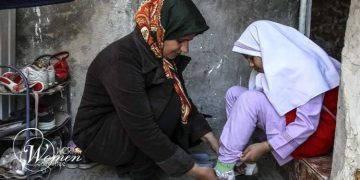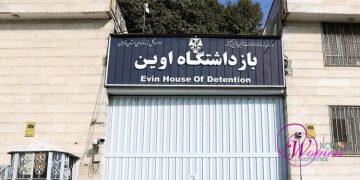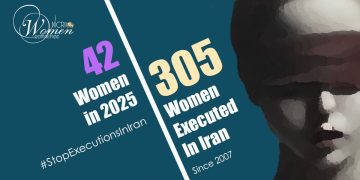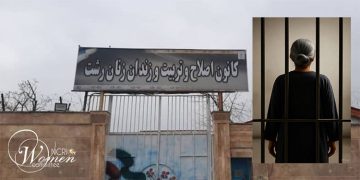The International Day for the Eradication of Poverty on October 17 offers an opportunity to glance over the magnitude and feminization of poverty in Iran.
Iran is a country sitting on a sea of oil. Iran holds the world’s second largest natural gas reserves. Its natural resources are abundant, and the country has access to open sea in the north and south. Yet more than 80 percent of the nation lives below the poverty line, and the middle class has essentially disappeared.
Poverty is growing by the day as the ruling regime’s damaging policies have led to the closure of factories and production units, and the destruction of agriculture, leading to increasing unemployment. At the same time, soaring prices and inflation had already diminished the public’s purchasing power, even before the coutry’s currency suffered a free fall.
Destruction of environment, plunder of public wealth, fraud and embezzlement in all national projects, rendered the people of Iran defenseless before natural disasters such as earthquakes and flashfloods, again adding to the population of the poor and helpless.
A simple search for the word “poverty” on our website reveals how all sectors of Iranian women have been affected. Teachers, students, nurses, government employees, workers, women heads of household, etc. Education of future generations has been a major victim. In the meantime, poverty fuels spread of various social ills, from panhandling, child labor, sale of organs, early marriages, homelessness, and sifting through garbage for food, to addiction, prostitution, sale of children, infants and unborn fetuses, and suicides.

Suffering from double discrimination institutionalized in the country’s laws and social norms, Iranian women face multiple barriers to education and employment, and to receiving bank loans, government support, and any form of insurance or subsidies.
For example, 82 percent of the 3.6 million female heads of household have no decent jobs and live under the poverty line without receiving any government support.
Thus women constitute the poorest sector of Iranian society so much that the state media and officials have acknowledged “feminization of poverty” in the country.
Gender discrimination and women’s unemployment
Economic instability is the main cause of growing poverty in Iran, but feminization of poverty and its consequent social ailments are mainly and basically due to the regime’s official policies and laws which discriminate against women.
As a consequence, most women are driven to low-pay jobs in the private service sectors, where businesses recruit more women to pay less to their workers.
Women have to do difficult work in the service sector. They become physically ill over time due to hard labor while not receiving their meager wages regularly or completely.
Zahra Shojaii, secretary general of the so-called reformist women’s assembly, has stressed on feminization of poverty in Iran. She says, “Poverty has become feminized. Social ills, suicide, runaway girls, addiction, and a rising number of female prisoners are some of the issues we face.” (The state-run dustaan.com, June 20, 2018)

Anoushirvan Mohseni Bandpay, head of the National Welfare Organization, had this to say about feminization of poverty, “We are lagging with respect to economic indices, such as providing jobs and employment for women. Of course, this is mainly due to country’s policies where we have 22 women employed compared to every 100 men with employment. Women’s employment rate in Iran is 12 percent, at best.” (The state-run Tabnak website, February 13, 2018)
Women’s unemployment rate in Ardabil Province is 51.2%, in Isfahan 53%, in Alborz 55.9%, in Ilam 86.4%, in Charmahal-o Bakhtiari 80.1%, in Khorassan Razavi 69.5%, in Northern Khorassan 55%, in Khuzistan 63.5%, in Fars 70%, in Qazvin 58.7%, in Kurdistan 55.1%, in Kermanshah 61.6%, in Kohgilouyeh and Boyer-Ahmad 64.7%, in Golestan 69.7%, in Lorestan 81.7%, in Mazandaran 64.1%, in Central Province 62.5%, in Hormozgan 73.1%, and 21% in Tehran.
Women face special obstacles in employment by the private and public sectors where they are easily excluded because of being married or having children. In addition to serious scarcity of job opportunities for women in the public sector, men enjoy priority over women in new employments.
Women Heads of Household among the poorest
Women heads of household are among the poorest of the poor and the main example of feminization of poverty in Iran.
3,600,000 women have been officially registered as women heads of household in Iran, according to Massoumeh Ebtekar, head of the presidential directorate on women and family affairs. (The official IRNA news agency, October 7, 2018) But the figures announced by the regime’s officials must be considered as the minimum.
At least 500,000 or 16% of women heads of household are under 20 years of age. This figure accounts only for the 3,100,000 women heads of household “who have been identified or have introduced themselves to support centers.” (Zohreh Ashtiani, secretary of the Family Faction of the mullahs’ parliament, interview with the state-run Shahrvand newspaper, July 10, 2018)
Over 3 million or 82% of women heads of household in Iran are unemployed. (Massoumeh Ebetkar, the state-run ISNA news agency, July 7, 2018)
The number of women heads of household in Iran is steadily increasing but they face numerous problems due to the economic crisis in Iran and discrimination against women.
According to a research, “the three main problems women heads of household face in Iran are discrimination and inequality, unemployment, and lack of social security,” said Susan Bastani, strategic studies deputy at the directorate for women and family affairs, adding, “The next problems they face are lack of freedom and choice, lack of social respect, poverty and economic deprivation. (The official IRNA news agency, May 4, 2019)
Living conditions for women heads of household are described as being under the “death line” because even if these women receive pensions, it is only around 100 thousand tomans ($9) a month, while the poverty line is 8 million tomans ($700) for every family.
According to Anoushirvan Mohseni Bandpay, head of the National Welfare Organization, only 180,000 women heads of household are receiving welfare. “With regards to occupational loans to women without guardians or with bad guardians, however, the organization faces major challenges,” Bandpay said. (The state-run Tabnak website, February 13, 2018)
For all the reasons briefly stated above, on the International Day for the Eradication of Poverty, we see that poverty is on the rise in Iran and women are its prime victims.
























